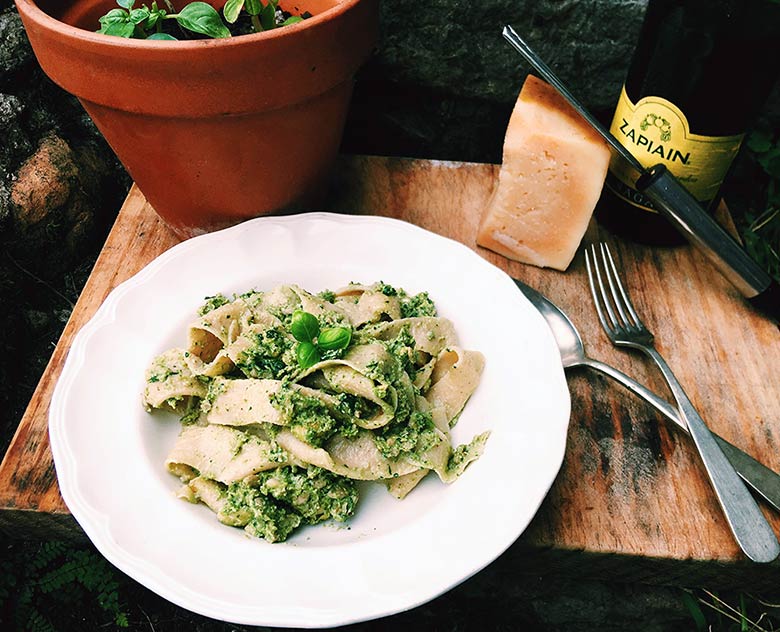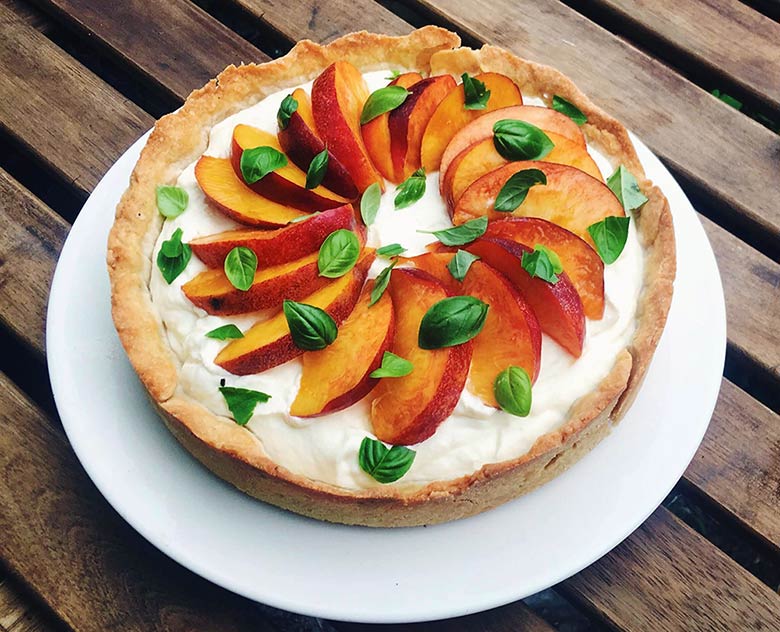It is believed that Ocimum Basilicum originated in India about 5,000 years ago.
Throughout history, it was thought that basil held magical powers. From healing snake bites to giving strength during religious fasting. In ancient Egypt, the herb was used to embalm mummies. In ancient Greece, it was known as the ‘Royal Herb’. Still today, basil may be referred to as the ‘King of Herbs’. Perhaps for its great flavour, perhaps as a nod to its history. Basil didn’t arrive in Britain until the 16th century, but luckily there’s plenty of it to go around today.
I experimented with some of Hooksgreen’s cultivars to create some magical summer recipes, below.
As many of us may find ourselves with more time indoors than usual this season, we’ve got plenty to be getting on with with homemade pastry and fresh pasta, though it’s always possible to substitute those with the bought version if you’re strapped for time. And of course, be sipping on a fresh basil cocktail (or mocktail) as you go.
Melon, Raspberry & Basil Summer Cooler
It's hot out there. Mix up this healthy and refreshing beverage to cool you down and keep you hydrated, with the option to add alcohol as you like.

| Ingredients |
|
| Method |
|
Rustic Homemade Pappardelle With Lime & Basil Mixed Nut Pesto
Go all out and make everything from scratch - pesto pasta never felt so sophisticated.

| Ingredients |
For the pasta:
|
| Method |
|
If you’ve never made your own pasta before, now is the time to try. If you thought it was too time consuming, too complicated, or too expensive. Think again! This fresh pasta is ready in under an hour and costs less than a standard pack of spaghetti. Depending on where you live, it’s probably quicker than going to the shop.
If you do have a large stone pestle and mortar, this would be the perfect time to use it! Pesto gets its name from the Genoese verb pestâ, to crush, or to pound, as the sauce was traditionally made this way
Finally...
|
Nectarine & Basil Key Lime Cheesecake
All of the good things come together in this sensational, flavour-popping dessert. It would be fantastic to serve at a barbeque or (socially distanced) garden party, if you can be strong enough to part with it.
Maybe make two if you think you’ll want a second slice. The pastry recipe makes enough for two 22cm tarts, or one large 30cm, so it’s easy enough to double the filling recipe.
Remember to make it the day before to give it time to chill and set.
A cheesecake filling with a pastry base and a sweet fruit and basil topping. Is your mouth watering yet?

| Ingredients |
For the pastry:
|
| Method |
Pastry
|
| Recipes created by Elena Pollen |
|
Elena is a creative writer who has written for Quinteassential, The Permaculture Research Institute and The Organization for World Peace, as well as maintaining her own blog about permaculture living. She believes in local and organic food practices and follows a vegetarian lifestyle. |
